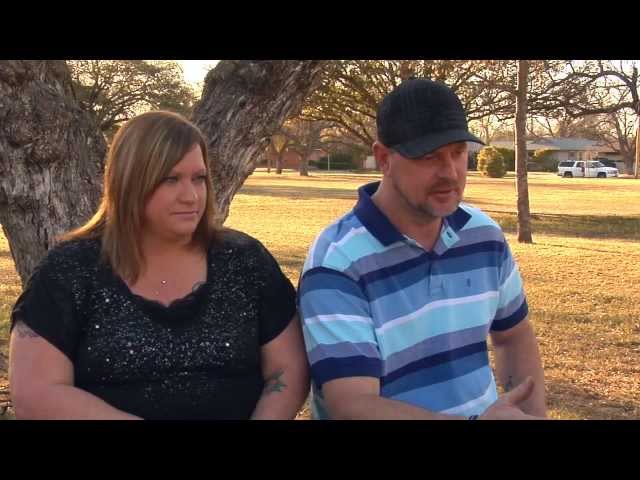Jacob Youngblood
- Author: Jacob Youngblood
- Category: 2013

A rock. One sand-covered rock is the reason Jacob Youngblood is paralyzed from the waist down.
"It was July 15, a Sunday afternoon," David Youngblood recalls of his son's accident. "We had been out all day riding at the lake, like we had done many times before. We decided to go check out the water and were headed down the spillway. Jacob was riding behind me."
The experienced motocross riders had been down the straight spillway path multiple times before. This scenario could describe hundreds of days for David and Jacob—until what happened next.
"I went down a little further, went around a corner and noticed Jacob wasn't behind me," his dad says. "I thought he may have just laid the bike over so I turned around to head back to him. When I got back to him, I couldn't believe what I saw."
Jacob hit a rock in the trail, which was hidden underneath sand, and was catapulted 80 feet over his handlebars. When David reached Jacob, his 12-year-old son was floating in and out of consciousness and bleeding from his nose and head. The impact had ripped his helmet off.
"I called the ambulance because I wasn't sure if he had a neck injury or something of that nature," David says. "He was doing everything right and had all of his protective gear on—helmet, gloves and boots, everything, like he always did. It was just a freak accident."
David followed the ambulance back into town and thought of the best way to get in touch with his wife, Sheri. He decided to call her sister because he was afraid his wife might get into an accident trying to rush to the hospital.
"I knew it was bad if David was worried about it," Sheri recalls. "We made it to the hospital before the ambulance. I went into the emergency room and saw Jacob. It was horrible."
Emmette "Buddy" Flynn, MD, Shannon Clinic emergency physician, general surgeon and medical director of the emergency department, was working when the ambulance carrying Jacob arrived at the hospital.
"One of the first things we noticed is that he could not move his legs and he didn't have any feeling below his belly button," Dr. Flynn says. "Fortunately, he was wearing protective equipment, including a helmet, so that did make us feel a little better about his overall condition, but he did have to be evaluated for other injuries. We did a CT scan and found a significant injury to his spine, which affected his spinal cord. Neurosurgery was consulted, and Dr. Luis Duarte arrived in the ER within a few minutes. We put a plan together to treat Jacob immediately. The fact that we have neurosurgeons on staff who can operate on an injury of that complexity and help us move the patient on through their care is a big bonus."
Accidents involving cars and motorcycles are one of the leading causes of death in children under the age of 15. Fortunately, Dr. Flynn says San Angelo does not see that many cases, but it is a significant injury pattern seen across the country. He says the basics of treating a pediatric trauma are the sameas that as an adult, but the anxiety level is higher—no matter how many cases you have seen or how many years you have spent treating patients.
"Dr. Duarte and Dr. Flynn told us they were going to take Jacob into surgery and it may take a few hours and all we could do is sit and wait," Sheri says. "Three or four hours later, Jacob came out of surgery and they told us he had damaged his spinal cord. We didn't know at that point what we were going to do."
During Jacob's surgery, his spine was stabilized. This is a vital step toward continuing care and beginning the road to recovery. Once the spine is stabilized, transfer training can begin. This teaches patient with injuries like Jacob's to move from the bed to a chair, wheelchair or shower.
"The first thing you think when you see someone like Jacob is that the significance of his injury alters his life, probably indefinitely," Dr. Flynn says. "I think there are research projects underway that may help him in the future, but at least for the immediate future, we had to think of how this will affect his life and how we could help him recover optimally from his hospital stay and move him as quickly as possible to rehabilitation so he can get on with his life."
Jacob stayed at Shannon for three weeks. He spent four days in the ICU for close monitoring and then was moved to the trauma unit so he could receive specialized care from multiple providers.
"The unit is specialized to manage patients like Jacob and is fairly unique to our facility," Dr. Flynn says. "We employ the assistance of physical and occupational therapists on the unit to begin the things that are carried through when he moves to rehabilitation. It takes a little while logistically to get someone admitted to a rehab facility, but it also takes a little while to get them to the physical condition they need to be in in order to make that move."
After his time at Shannon, Jacob went to Houston for a month to receive special spinal cord therapy. The biggest influence David, Sheri and Dr. Flynn have noticed relating to Jacob's recovery is his attitude.
"The first several days he was down because of the significance of his injury," Dr. Flynn recalls. "But the thing that made taking care of Jacob wonderful was that he got through that emotional period early, while he was still in the hospital. A lot of the times we don't get to see that. He got over that hump, and then was ready to know what he had to do next. His attitude helped immensely, and it is what will carry him through this ordeal."
Sheri says her son has been strong throughout everything he has gone through. He is in sixth grade at Lee Middle School and adjusted well with going back to school after being out for six months. During that time, four teachers came to Jacob's home to help out with his schoolwork.
"We are always proud of him," his mother says. "He doesn't let his situation slow him down any, and he hasn't complained once throughout all of this. That amazes me."
The Youngbloods are grateful for the enormous amount of support they have received from friends, family, members of the cycle club Jacob and his father are a part of, and complete strangers. They are thankful for the care Jacob received at Shannon and in Houston, and credit the trauma, ICU and unit nurses and providers for making sure their son was well taken care of.
"Over the years, Children's Miracle Network has contributed in a broad spectrum to care for pediatric trauma patients," Dr. Flynn says. "That extends even to prehospital care providers. CMN has contributed to not only the local ambulances but also to those in the region, who take care of and transport patients here. Contributions to the pediatric ward in specialty items, the ER, the trauma unit, the ICU have also been made. The impact is broad and extends from the very moment we meet the patient throughout the continuum of care until we move them home or into a rehab facility, whatever the next area of care needs to be."
Jacob and his parents are looking forward to continuing his rehabilitation. Readapting their lifestyle and daily routine has been challenging, but they have advice for parents who may find themselves in a similar situation.
"It will be a long road, but everything will be OK," they say. "Just try to stay positive and be there for your child. Jacob is a miracle because he lived through the accident. We are lucky he is still with us and is still himself—a happy kid."

.jpg)

.jpg)